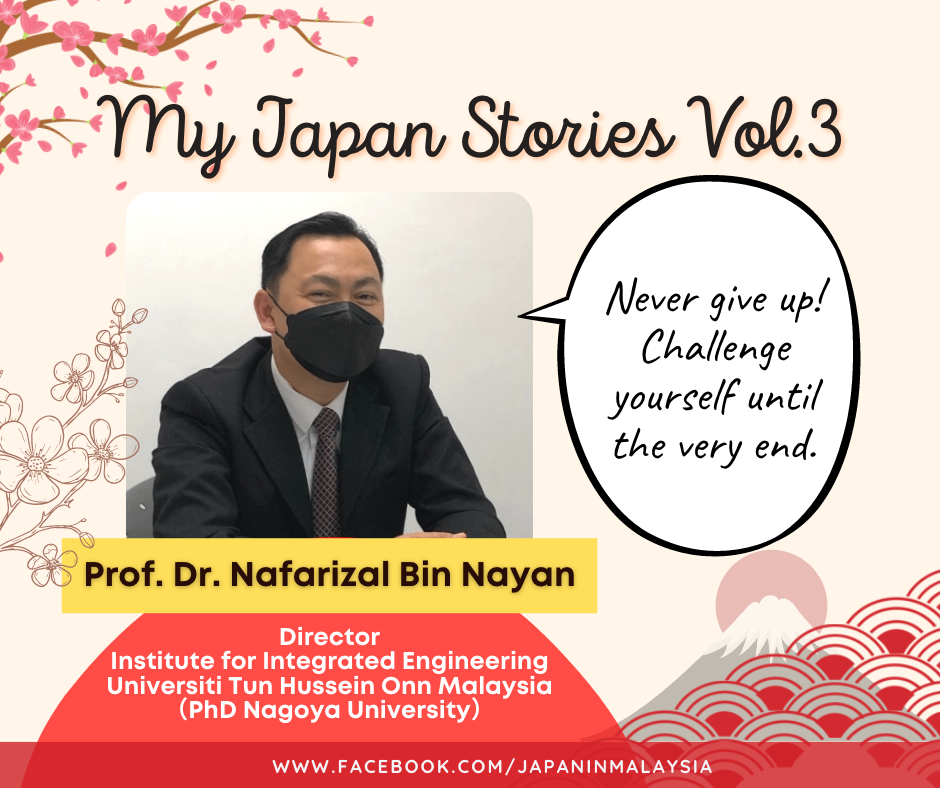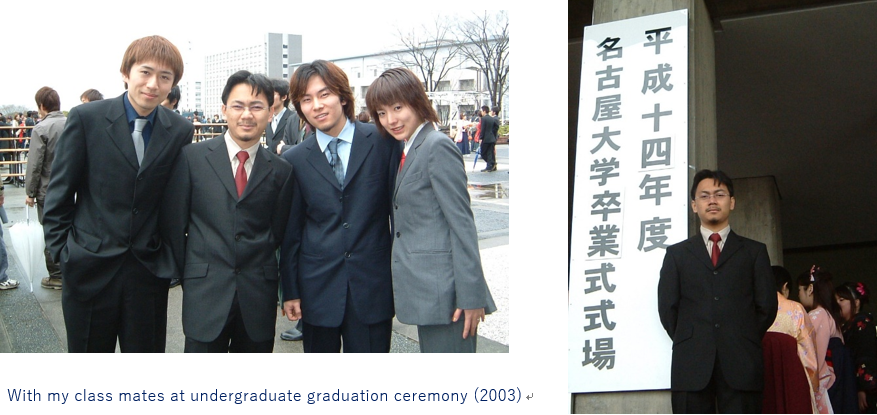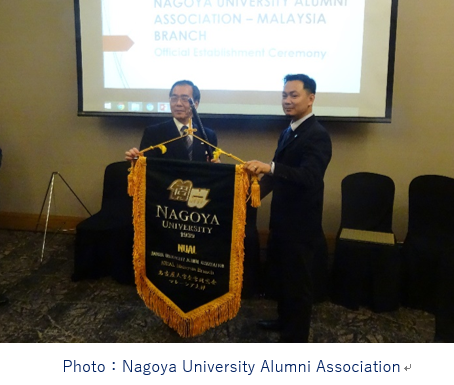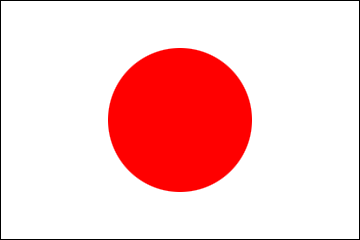My Japan Stories Vol.3
2022/5/26


Wanted to live in a foreign country
“Since I was a child, I wanted to live in a foreign country, and not just visiting. I have only seen foreign countries through TV, and was quite interested to know how the people in these countries live. Or how would I live in those countries.
As I was doing quite well at school, I was fortunate to have the opportunity to study abroad for university. Back then, my English was not good, so I was hoping to study in countries such as Japan, Korea or Germany. Eventually, I was given the choice between Japan and UK.
I was attending a technical high school. There were Japanese electronic appliances at my house - I was always wondering how this radio was made, how I can make this audio player, and thinking how it would be awesome if I could make one of these gadgets.
Naturally, I decided to further my studies in Japan.
Well, because there are fruits and snow
When I was attending Ambang Asuhan Jepun (AAJ), I was doing a bit of research as to which university in Japan I wanted to study. I decided to study at a university in one of the prefectures in the Hokuriku region. The reason was that the prefecture was famous for its production of fruits, while snow falls in the winter.
I got scolding from my AAJ teacher when I told him my decision, saying do not choose a school based on such a silly reason. By no means to brag, my grades were quite good. I found out later that my teacher was going to suggest that I go to Tokyo Institute of Technology, Nagoya University, Osaka University, considering my major as well as my future.
As a result, I decided to further my studies at Nagoya University.
And not only chosen as one of the 16th batch of the LEP, I was going to receive the scholarship from the Government of Japan. I was blessed.
How do I “go sightseeing” my research findings!?
After attending AAJ for two years, I enrolled at Nagoya University (Meidai for short). At first, it was difficult to keep up in class. The lectures were totally incomprehensible. This was because the Japanese we learnt at AAJ was standard textbook Japanese. During lectures, various Japanese dialects including Nagoya dialect was used by the lecturers. Many of them spoke quickly, and their handwriting on the whiteboard was often hard to comprehend too.
I also had difficulty in taking the exams. It was no problem to answer calculation questions by using mathematical formula, but when it comes to writing essays, writing kanji characters was tough. So, my solution back then was to memorize the entire thing.
1/4 of my lifetime spent in Nagoya
I spent 9 years studying and researching at Meidai for my undergraduate, masters and PhD. I was fortunate to be able to receive scholarship for all my 9 years - for undergraduate from LEP and the Government of Japan; for masters from the Government of Japan; for my PhD from my current employer.
I studied hard but I also enjoyed my life in Nagoya. At Meidai Sai, the university festival held every June, we had Malaysian food stalls. We served watermelon juice and tasty deserts made by banana.
I played soccer on weekends, and badminton on Tuesdays and Thursdays. We had matches playing against other universities too. When doing my masters, I started to travel to many places around Japan for attending academic conferences. I was enjoying my life in Nagoya so much to the extent that I was never homesick for Malaysia.

My kampung in the northern end, and my work in the southern end
When I thought about doing PhD, I visited the Malaysian Embassy in Tokyo to inquire about available scholarships. I found out that Kolej Universiti Teknologi Tun Hussein Onn (KUiTTHO), now known as Universiti Tun Hussein Onn Malaysia (UTHM), was recruiting lecturer with PhD. The school was offering scholarships for three years on condition that the recipient of the scholarship joins KUiTTHO after obtaining their doctorate.
I am originally from Perlis, the northernmost state in Malaysia, bordering with Thailand. UTHM is located in Johor, which is the southernmost state in Malaysia, and Singapore is just across the Causeway.
I have thought about continuing my research activities in a university in Perlis, but maybe it was meant to be, I have since been with UTHM for the past 14 years.
Japanese style education @ UTHM = Graduates’ employment rate 100%
When I started working at UTHM, there were no machines, no facilities, which Meidai had. All of them were indispensable to conduct research, so I suggested to UTHM and gradually UTHM improved the facilities.
What I also like to emphasize is that Japanese universities have excellent system from the university lab functions to the way the professors guide their students. I will give you some examples – experiment is conducted almost every day to keep up with the pace of studying. Machines used for these experiments are operated by students themselves – for this, there is a risk that the students may break the expensive machines even unintentionally. Even so, it is extremely important to let the students actually use the machines and gain experience from learning.
Other examples – in Japan, weekly briefing sessions on research are held; the research schedule is planned meticulously; and your major professor will check your research paper thoroughly.
As I am now in the position to provide guidance to my students, I am practicing what I have experienced in Japan. As the Director of Institute for Integrated Engineering at UTHM, I am pleased and proud to say that the employment rate of the Institute’s graduates is 100%. Of course, this is the result of our students’ hard work, but I am also confident that the Japanese style education I am practicing is effective.
Firm bond between Malaysia and Meidai
Under LEP, Malaysian students are sent to Nagoya University since its first batch. Including privately funded students, there are quite a number of Malaysians who have studied at Meidai. Even so, there was no Meidai alumni association in Malaysia.
I therefore suggested this to the Meidai headquarters, and they have happily agreed to my suggestion. After various adjustments, in February 2016, as the 15th overseas branch of the Nagoya University Alumni Association Malaysia Branch was established, with then President Matsuo of Meidai also present at the inaugural meeting. As the first chairperson of the Malaysia Branch, I was and am determined to do my best. But I was also touched to know that we are all firmly connected with our Meidai mates.
In 2019, I received “Nagoya University Award for Contributions to International Exchange” in recognition of my endeavors to establish the Malaysia Branch.


Never give up!
My message to Malaysian students aspiring to study in Japan - first of all, don’t be shy when you start your studies in Japan. Start a conversation with someone and make new friends. Friends that can share notes with you, especially when you are having difficulty in keeping up in lectures. Friends who will play sports with you during weekends. Without such friends, four years of studying in Japan is way too long. The bottom line is, be creative in enjoying both your life and studies in Japan.
As a result of not giving up and challenging until the very end, I hope my kohais will go and get all kinds of chances. Do not wait for the chance to come to you.
My message to Malaysian students aspiring to study in Japan - first of all, don’t be shy when you start your studies in Japan. Start a conversation with someone and make new friends. Friends that can share notes with you, especially when you are having difficulty in keeping up in lectures. Friends who will play sports with you during weekends. Without such friends, four years of studying in Japan is way too long. The bottom line is, be creative in enjoying both your life and studies in Japan.
As a result of not giving up and challenging until the very end, I hope my kohais will go and get all kinds of chances. Do not wait for the chance to come to you.
